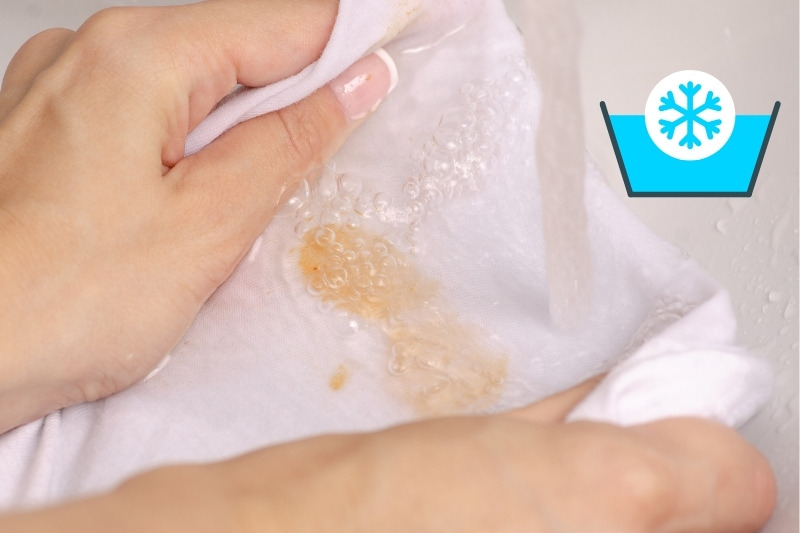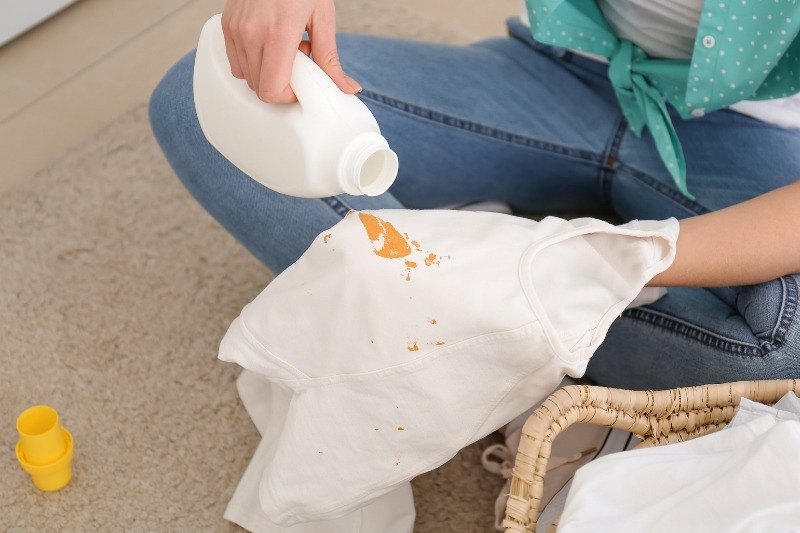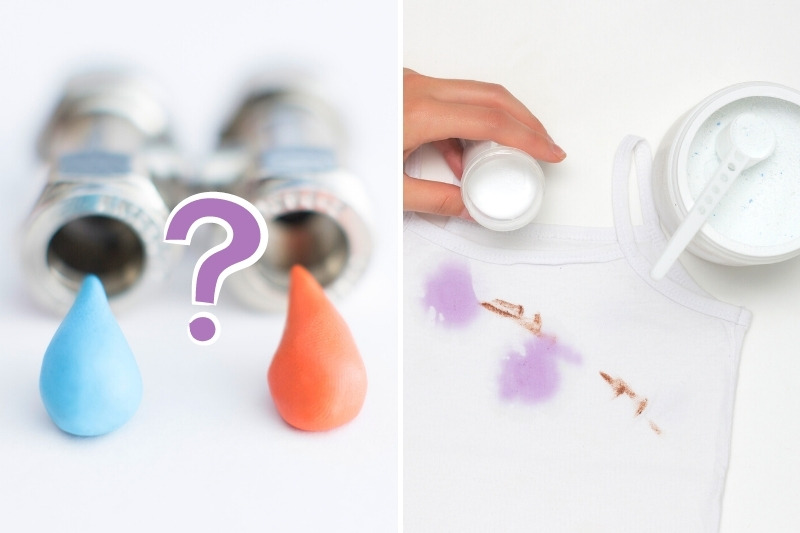We try so hard to avoid them, but no matter what we do, somehow a stain always makes it onto at least one item of clothing.
Whether it’s a hot pan spitting cooking oil onto your top, coffee spilled in your lap when you’re half-asleep, or even a bowl of spaghetti bolognaise that was too delicious not to slurp, these culprits can all leave marks on our clothes that may not come out in a normal wash cycle.
Fortunately, it’s easy to pre-treat a stain. However, doing it the right way may be the difference between removing the stain and causing it to set.
Read on to find out how to how to pre-treat different types of stains before running your clothes through a wash cycle.
When to Treat Stains
It’s usually best to treat stains before you put your item in the wash. The key to stain removal is to treat and wash the item of clothing as soon as possible.
If you chuck your stained item into the laundry basket and leave it until your next wash, this gives the stain chance to set and will make it harder to remove.
You should always treat stains before washing them, because a wash cycle could cause the stain to penetrate into the material and spread to other parts of the garment.
What to Do When You First Get a Stain

As soon as the item of clothing gets stained, remove the excess dirt, grease or liquid with a paper towel, by gently blotting the area.
If you’re out and can’t get to a washing machine right away, you can run the stain under cold water to try and dilute it. Run the cold water on the other side of your stained item to push the stain out.
How to Pre-Treat Stains Before Washing

Here’s how to pre-treat stains before putting items in the washing machine.
1. Apply a stain remover product to the stain
Start by applying a stain remover product to the stain, following the instructions carefully. If you don’t have a stain remover, you can use detergent or make a paste out of vinegar and bicarbonate of soda.
2. Gently rub the product into the stain with your fingers
Avoid rubbing the fabric together as this can cause the stain to be pushed in further and even spread to other parts of the item.
3. Let the stain remover do its job
Leave the stain remover to act for at least 5 minutes or follow the instruction label.
4. Wash the item as normal
Put the item directly in the washing machine and wash on a normal cycle.
When machine washing a stain, it’s best to do so on a warm temperature such as 30 or 40 degrees as anything too hot or cold could be counterproductive and cause the stain to set or even ruin the garment.
Should You Use Hot or Cold Water to Treat Stains?

If you don’t have a dedicated stain remover for your clothes, you may wish to soak the item for a little longer to lift the stain. In this case, you can use a detergent or vinegar solution and soak the item in warm or cold water depending on the stain.
Water-based stains: Soak in cold water
Soak water-based (soft drinks, coffee, water-based paint, urine) stains and stains from certain foods such as jam in cool water.
Oil-based stains: Soak in warm water
Soak oil-based stains such as makeup, grease, dirt, grass and tomato-based stains in warmer water.
How to Treat Stains on Delicate Materials

Always check the label of your stain remover to see whether it can be used on more delicate materials such as silk and wool. Unless explicitly stated, avoid using these products on natural materials.
Instead, use stain removers specifically made for delicate materials, or use your delicates detergent and pre-treat the spot following the steps above.

In The Wash is your guide to the best laundry and cleaning products, tips and tricks. Our mission is to solve the UK’s cleaning and laundry dilemmas!






